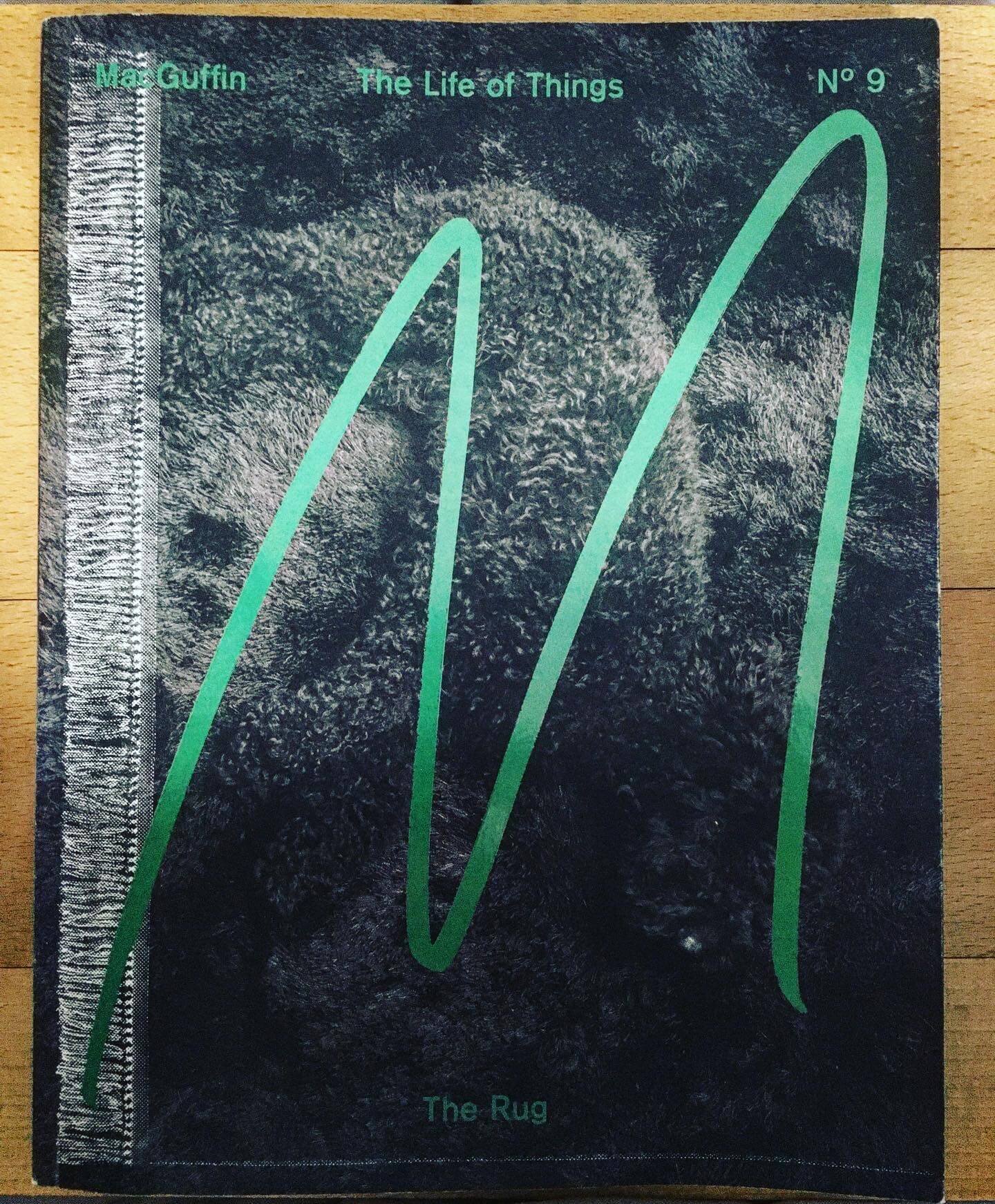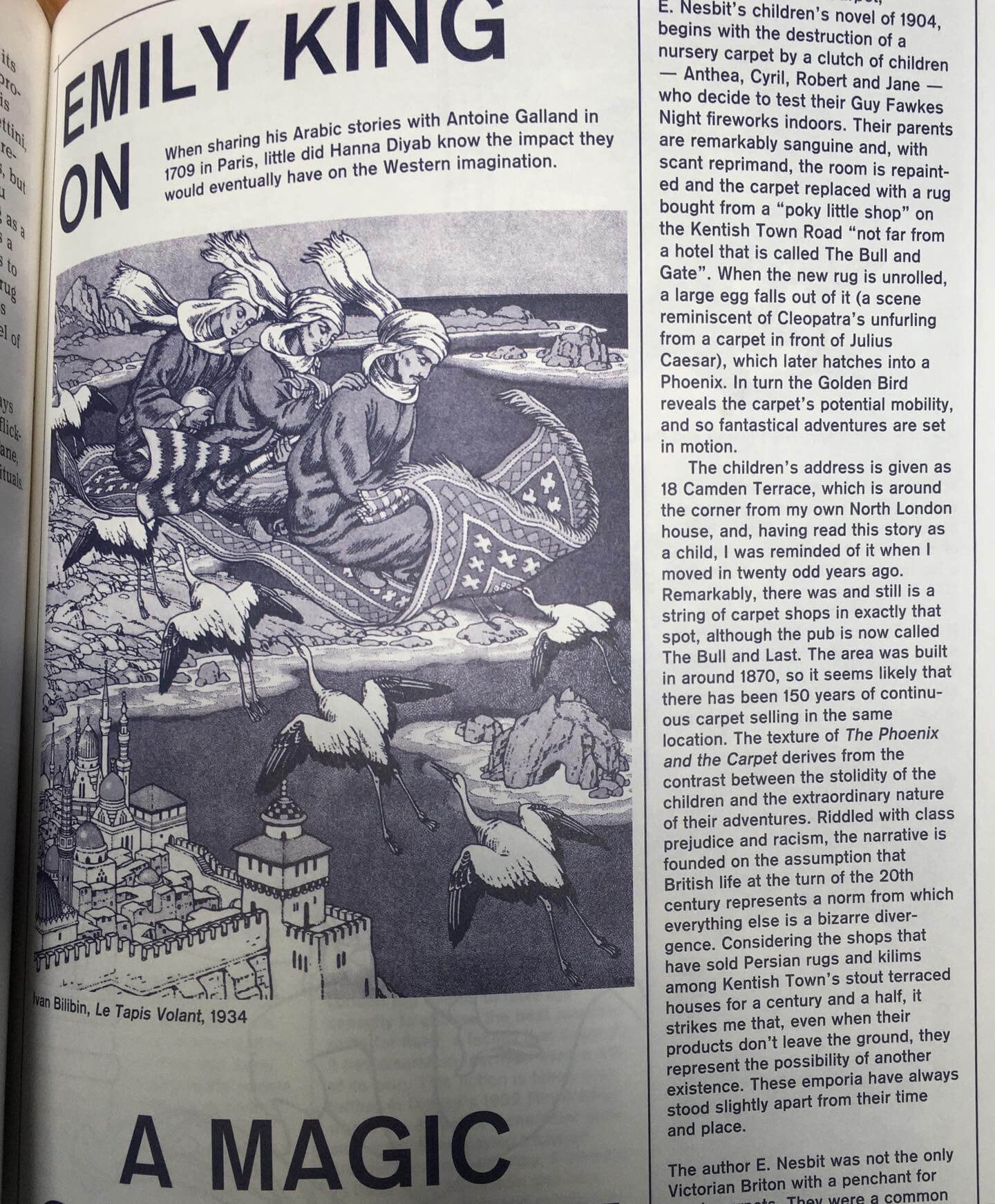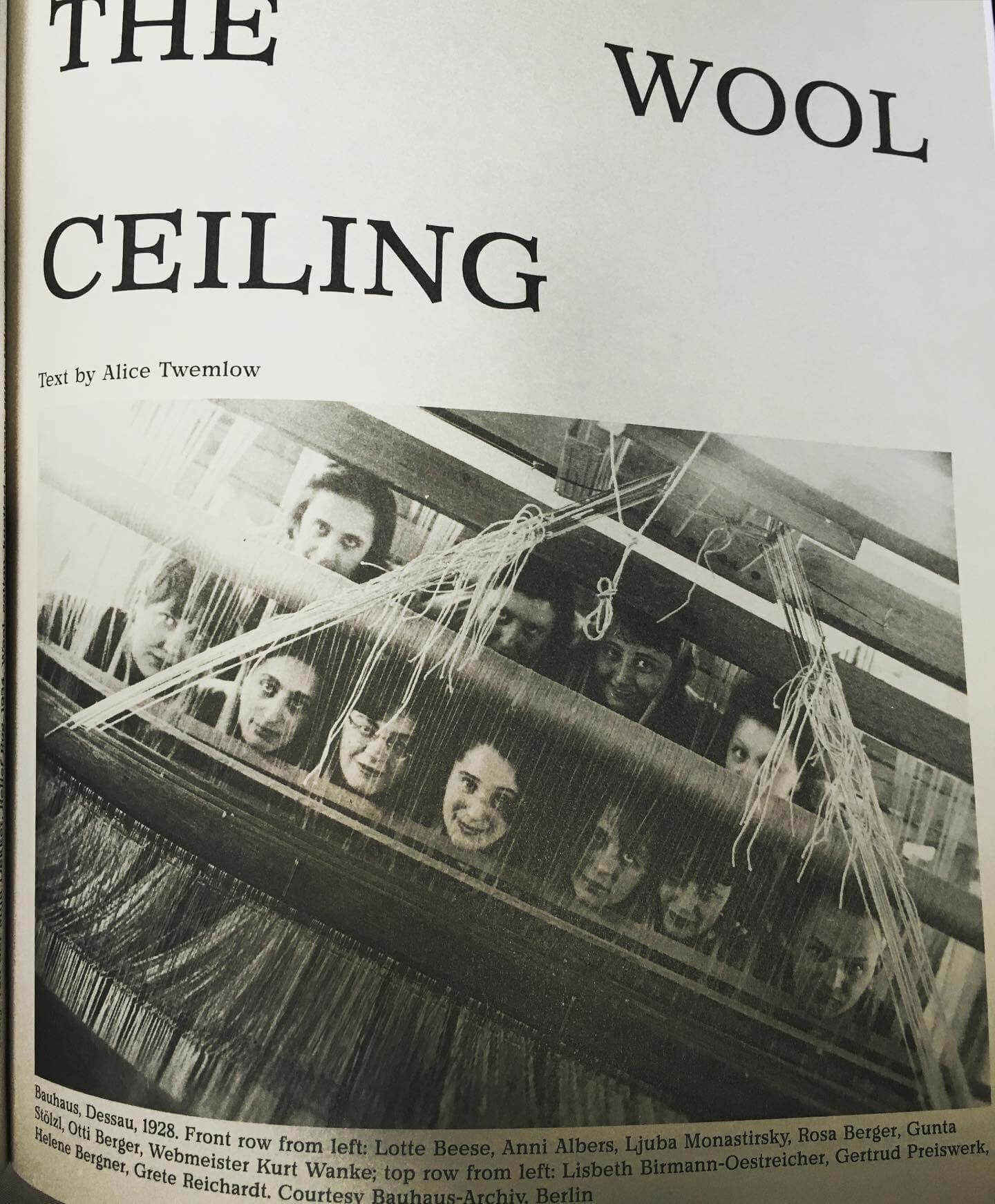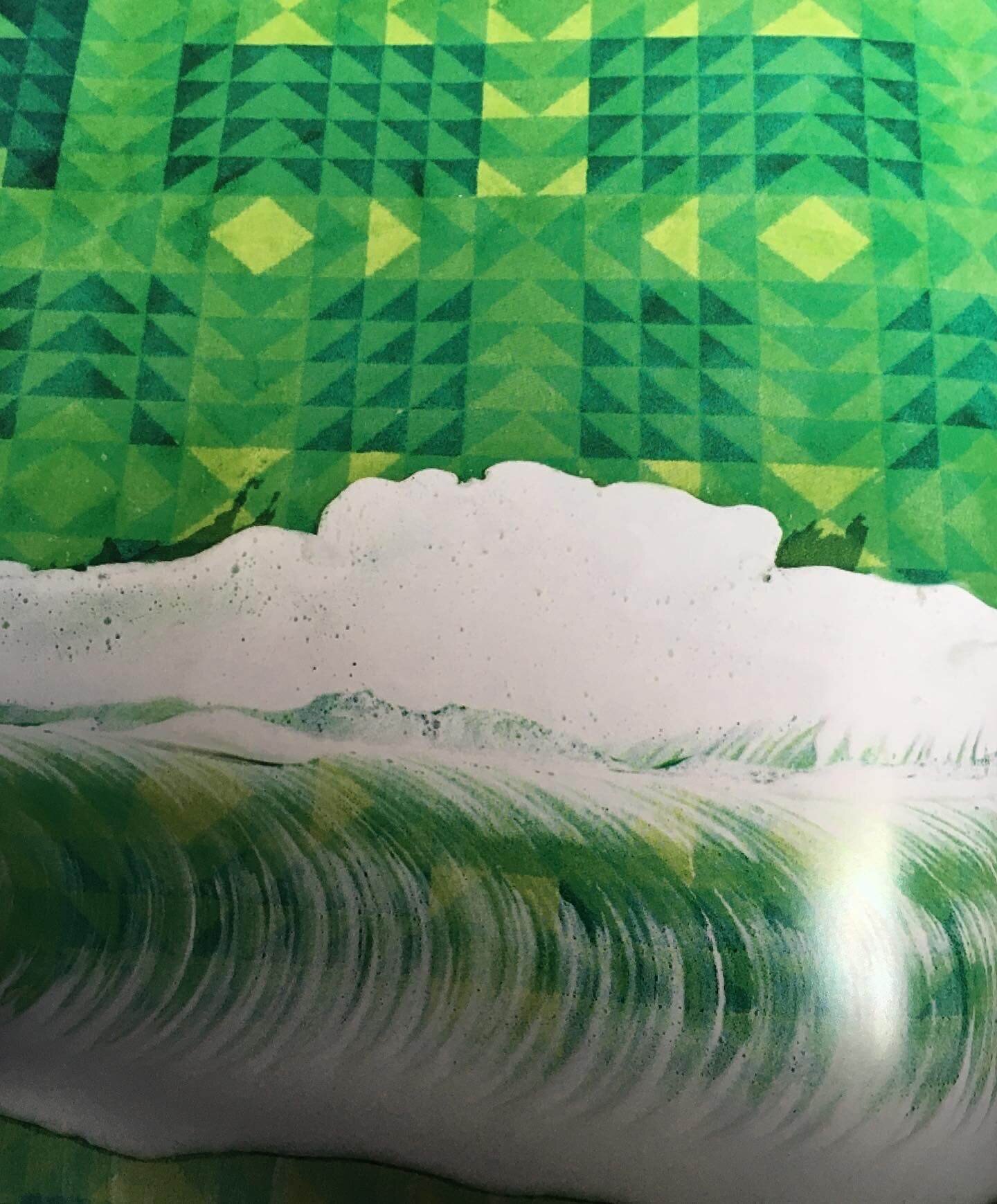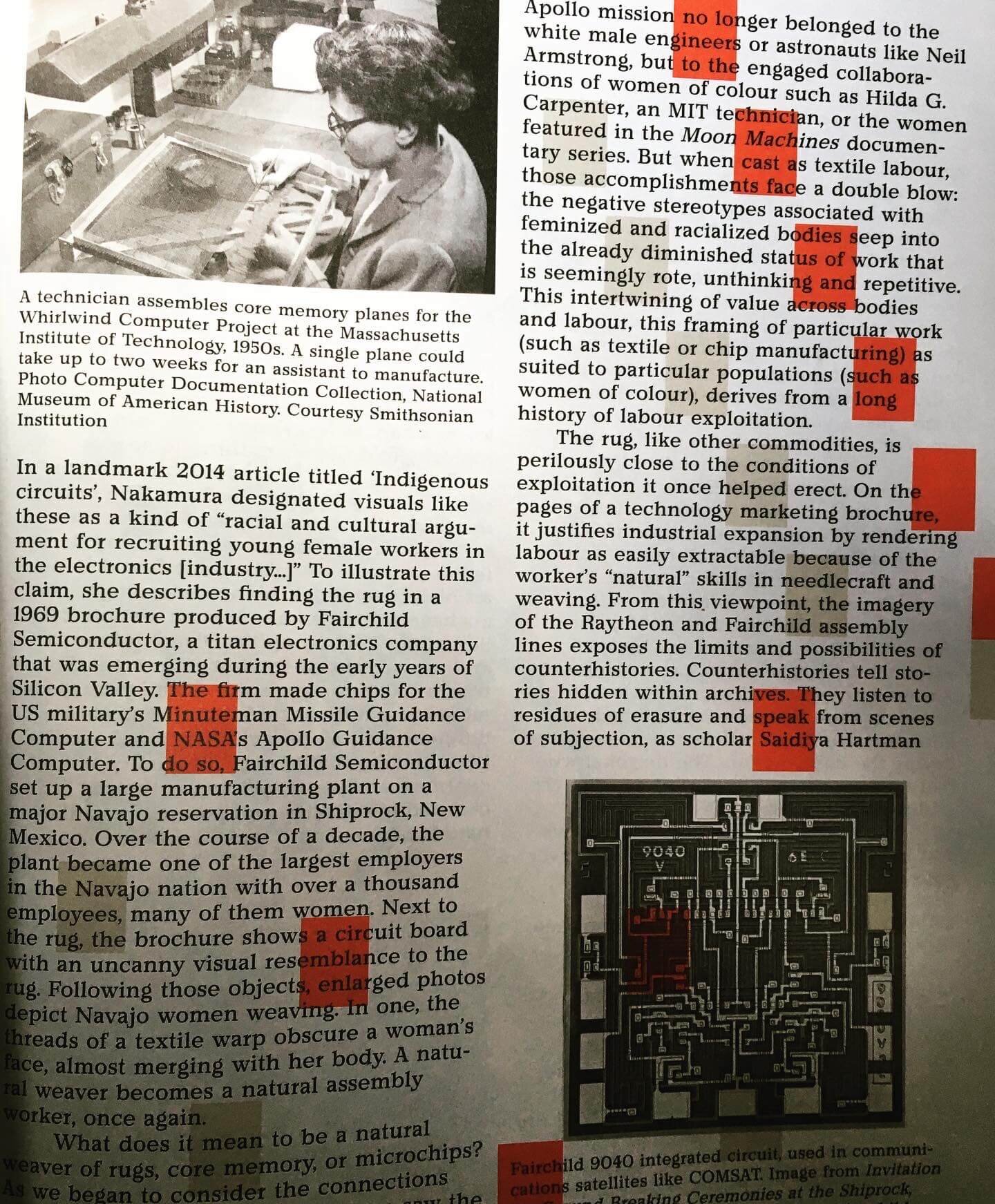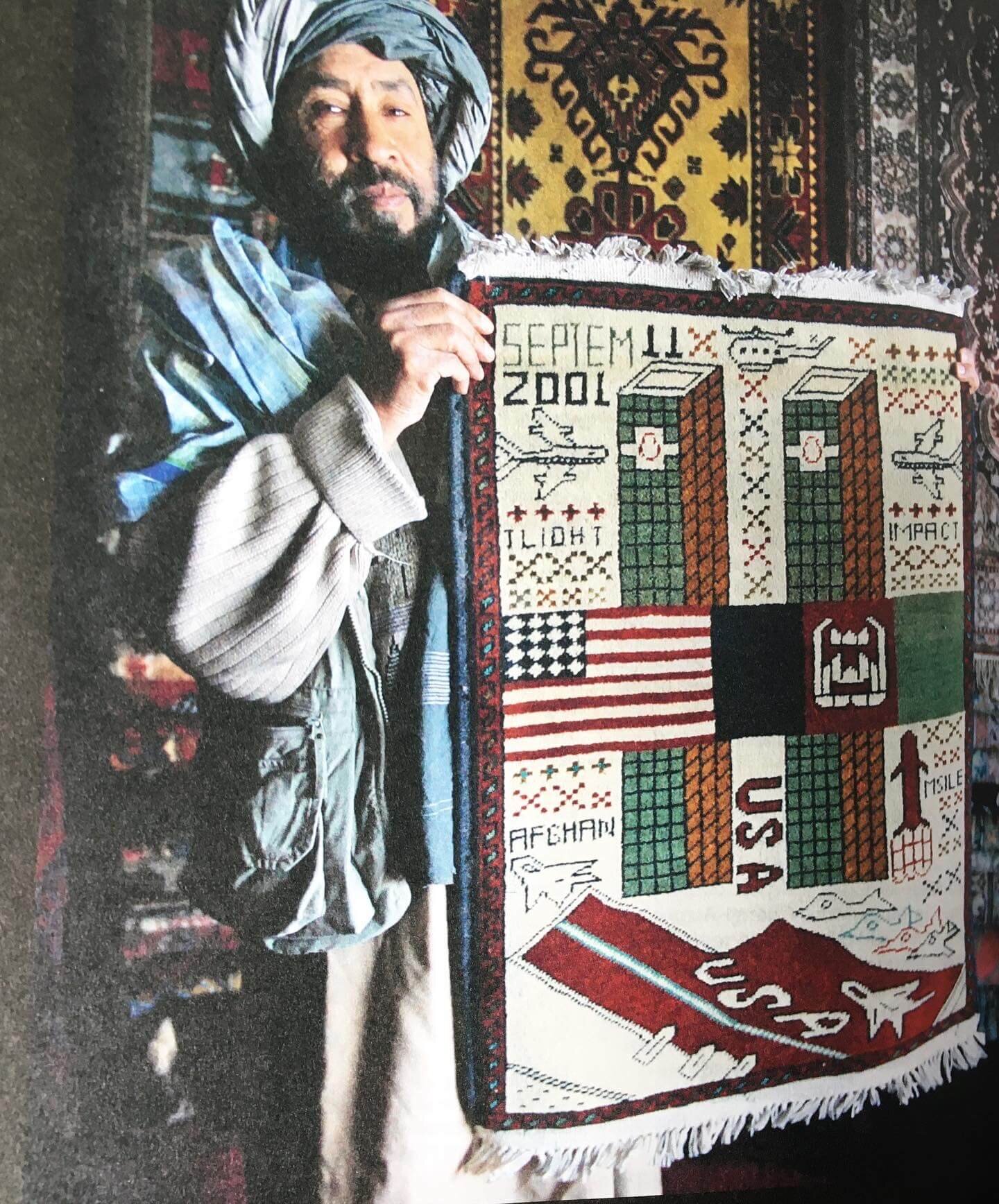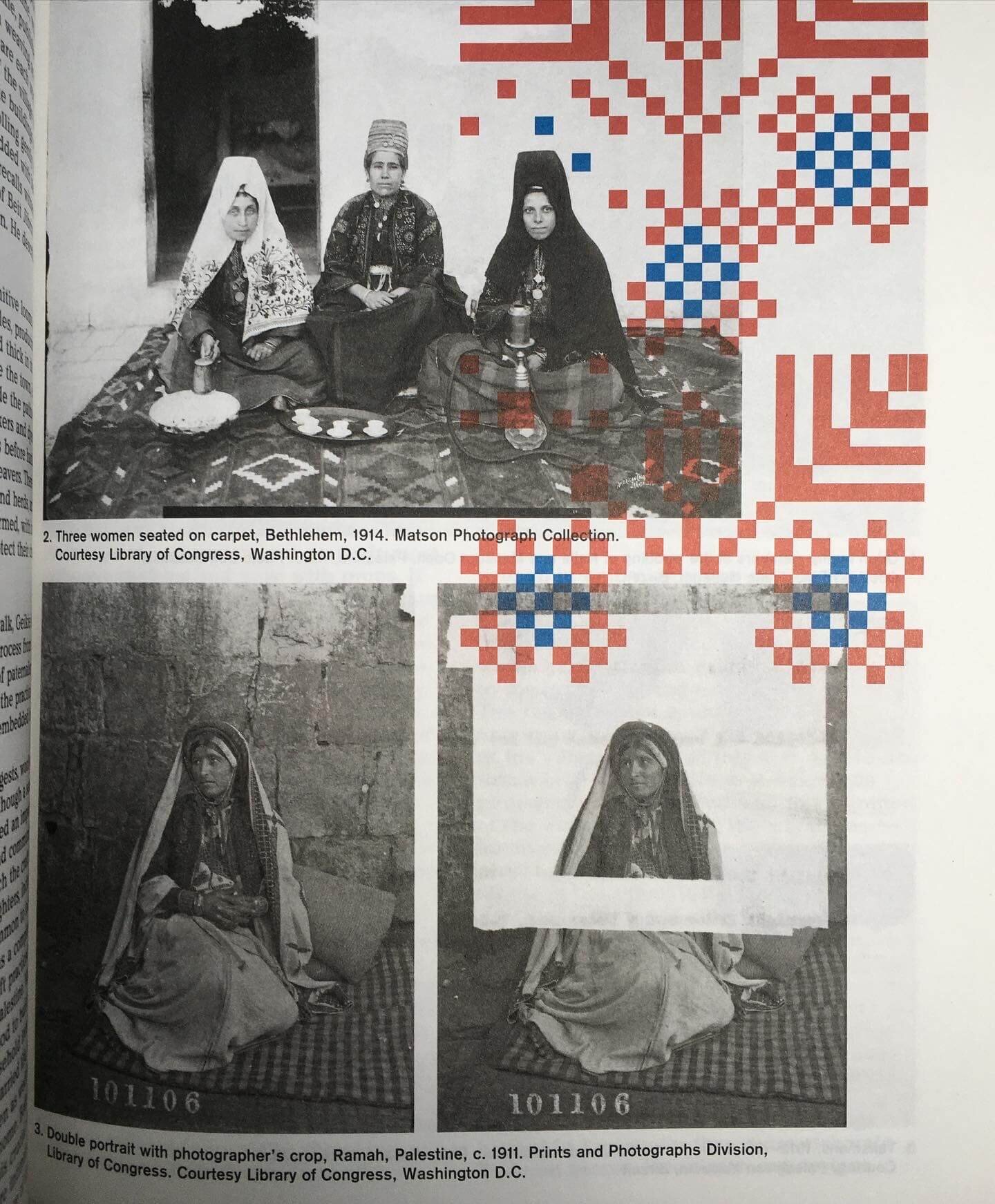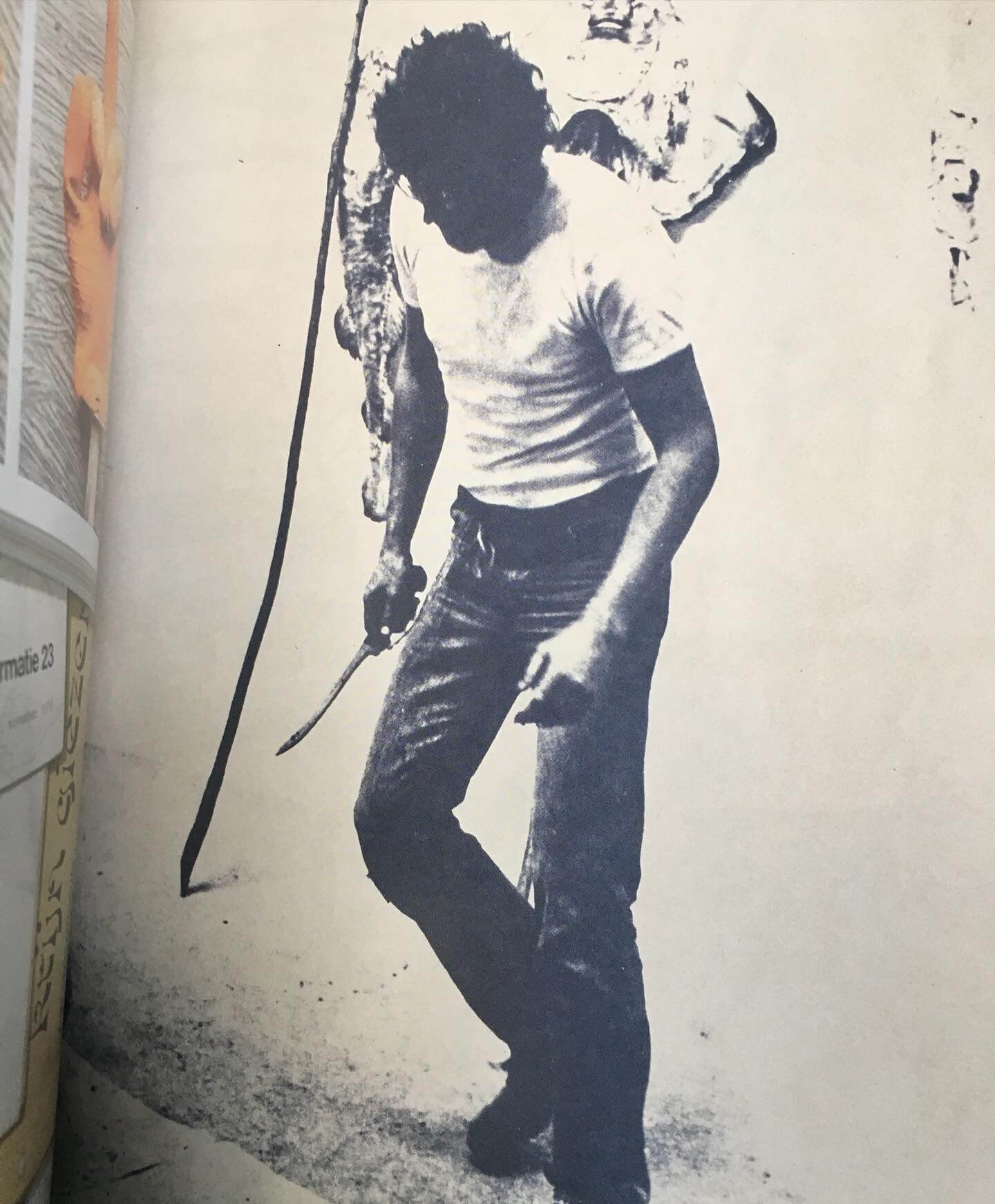The latest issue of Macguffin magazine is another tree of knowledge, taking one inanimate and seemingly everyday object and using it to launch us off on myriad adventures. This time it's the rug, so much more than an ornate decoration or domestic utility. Learn about its fascinating political and cultural significance and have tons of fun along the way.
Discover how "carpets are dense jungles filled with voracious herbivores and fearsome predators" (don't panic). Learn how tatami "as part of a social, cultural, architectural and environment system, has been lost in the transformation of lifestyles", now mostly featuring as isolated elements for a single room.
Meet influential painter turned weaver and folk art activist Hannah Ryggen, whose tapestries "speak up for a civil society where all bodies should have equal rights and where use of power is closely monitored".
"The Rug is Back" is Bart de Baet's brief personal history of his body fur, the embarrassment it has caused, its influence on his various states of dress or undress over the years, and how this "man with all the hair" continues to tussle with his tuftiness.
Research professor Alice Twemlow reveals how Walter Gropius and the Bauhaus school dangled a utopian egalitarian vision of the "structure of the future", built collaboratively by expert artists and craftspeople – yet confined three-dimensional women such as Annie Albers and Kitty van der Mijll Dekker to textiles.
This one was a proper wow moment: women of colour weaving core memory for guidance computers in the 50s and 60s, memory that was integral to the Apollo moon landings. Their seldom acknowledged labour raises questions about exploitation, the limitations of counterhistories and how we lose access to these women's desires and intentions in the photographic frame.
Elsewhere, you can read about the carpet as a temporary place of worship, architectural motifs n'all, in places such as Anatolia, and how influence runs both ways as you can see on the marble floor of Jama Masjid mosque in Delhi. Emily King's piece on magic carpets and storytelling is delightful, taking us from E Nesbit’s The Phoenix & The Carpet on Kentish Town Rd via Aladdin and Asterix to Freud and The Big Lebowski. Carpets invite fantasy.
Tapestries can also carry the histories of their makers as Christel Vetters' piece outlines, touching on master weaver Hagop Kapoudjian and other Armenians who settled in the Kum Kapi district of Constantinople around 1890. He fused traditional Turkish geometric patterns and bold colours with the silk-threading techniques and Persian motifs of his temporary new home.
Rachel Dedman's piece about Bedouin villagers at the turn of the 20th Century explains why the rug in Palestine, though more quiet and unassuming than others, is an "ancient form of female architecture".
Airport carpets can be as interesting as they are ignorable, says George Pendle (channelling Eno). Look out for a brilliant anecdote about weavers crushing hallucinogenic Syrian Rue seeds to dye Persian carpets thus giving them 'flight'.
War rugs depicting atrocities such as 9/11 are big business but not for the reason you might imagine, as Rachel Dedman says.
The name Krijn Giezen is new to me. The artist's credo was "waste = material", one he espoused through everything from print publications to patchwork tapestries and a 300m-long noise barrier near Rotterdam. Arnoud Holleman tells us about his personal fascination with the man.
One to treasure and keep. Lie on it if you must.
Available from their website or try Magculture.



